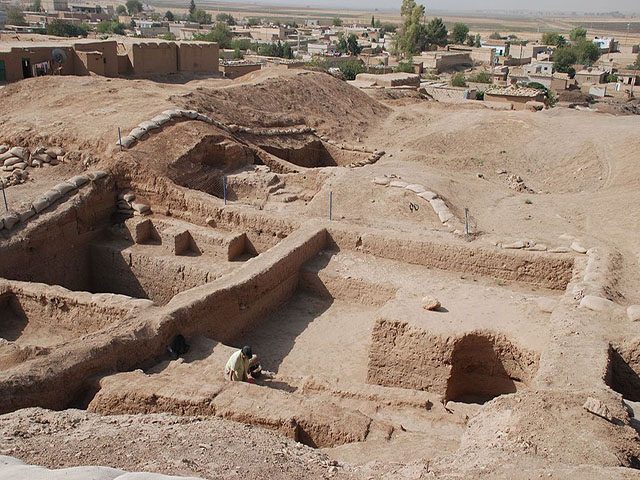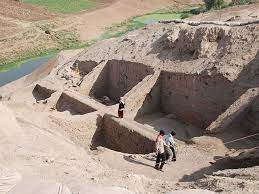Tel Halaf preserves a rich stratigraphy dating back to the Halaf culture (6500–5500 BCE)—the site where this prehistoric culture was first identified, renowned for its distinctive red-and-black painted pottery.
In the early first millennium BCE, Tell Halaf became the capital of an Aramean kingdom, known as Guzana. King Kapara built a grand royal palace, famously adorned with monumental basalt statues of winged Lamassu figures. This palace became known as “Bit Hilani”, a name linked to its unique architectural style.
By the 9th century BCE, the site came under Assyrian control, though it retained its aristocratic artistic character. In recent decades, the upper mound has suffered damage due to regional conflicts. Fortunately, many of the key sculptures had been preserved in the Aleppo National Museum, with some relocated to Berlin, ensuring the artistic legacy remains alive.
Current restoration efforts include stabilizing the eroded slopes and creating a 3D reconstruction of the palace complex based on historical excavation data from the German mission.








